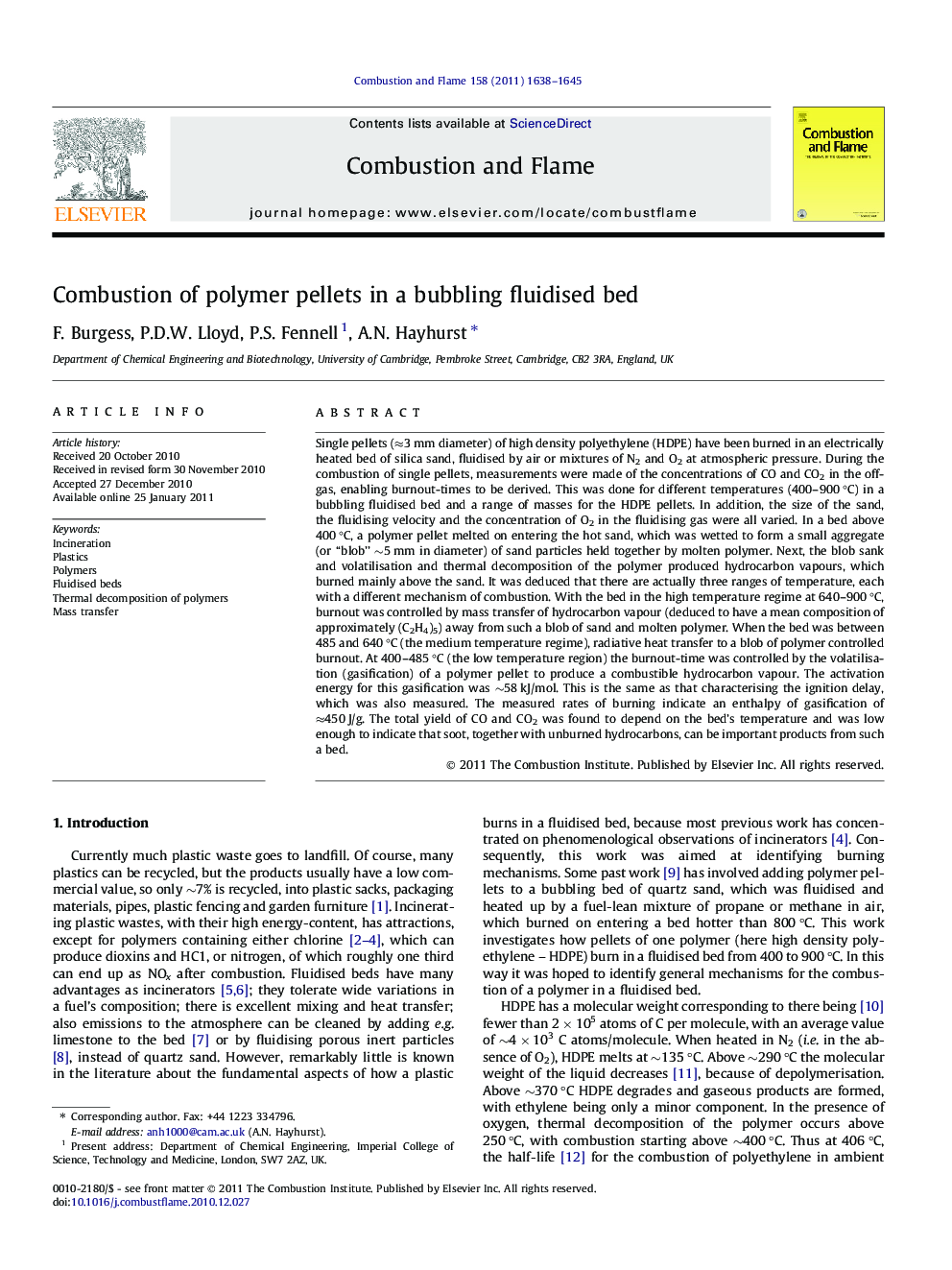| کد مقاله | کد نشریه | سال انتشار | مقاله انگلیسی | نسخه تمام متن |
|---|---|---|---|---|
| 167445 | 457861 | 2011 | 8 صفحه PDF | دانلود رایگان |

Single pellets (≈3 mm diameter) of high density polyethylene (HDPE) have been burned in an electrically heated bed of silica sand, fluidised by air or mixtures of N2 and O2 at atmospheric pressure. During the combustion of single pellets, measurements were made of the concentrations of CO and CO2 in the off-gas, enabling burnout-times to be derived. This was done for different temperatures (400–900 °C) in a bubbling fluidised bed and a range of masses for the HDPE pellets. In addition, the size of the sand, the fluidising velocity and the concentration of O2 in the fluidising gas were all varied. In a bed above 400 °C, a polymer pellet melted on entering the hot sand, which was wetted to form a small aggregate (or “blob” ∼5 mm in diameter) of sand particles held together by molten polymer. Next, the blob sank and volatilisation and thermal decomposition of the polymer produced hydrocarbon vapours, which burned mainly above the sand. It was deduced that there are actually three ranges of temperature, each with a different mechanism of combustion. With the bed in the high temperature regime at 640–900 °C, burnout was controlled by mass transfer of hydrocarbon vapour (deduced to have a mean composition of approximately (C2H4)5) away from such a blob of sand and molten polymer. When the bed was between 485 and 640 °C (the medium temperature regime), radiative heat transfer to a blob of polymer controlled burnout. At 400–485 °C (the low temperature region) the burnout-time was controlled by the volatilisation (gasification) of a polymer pellet to produce a combustible hydrocarbon vapour. The activation energy for this gasification was ∼58 kJ/mol. This is the same as that characterising the ignition delay, which was also measured. The measured rates of burning indicate an enthalpy of gasification of ≈450 J/g. The total yield of CO and CO2 was found to depend on the bed’s temperature and was low enough to indicate that soot, together with unburned hydrocarbons, can be important products from such a bed.
Journal: Combustion and Flame - Volume 158, Issue 8, August 2011, Pages 1638–1645